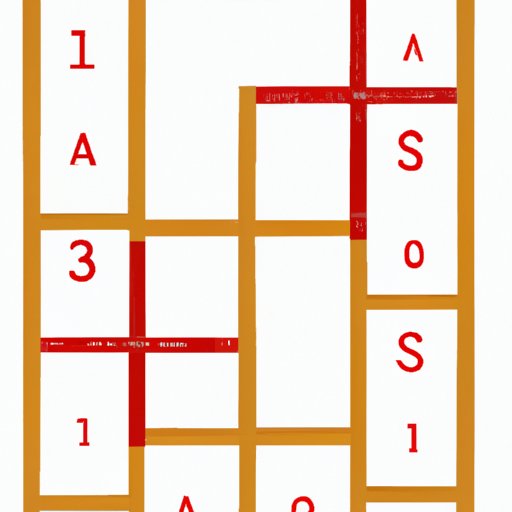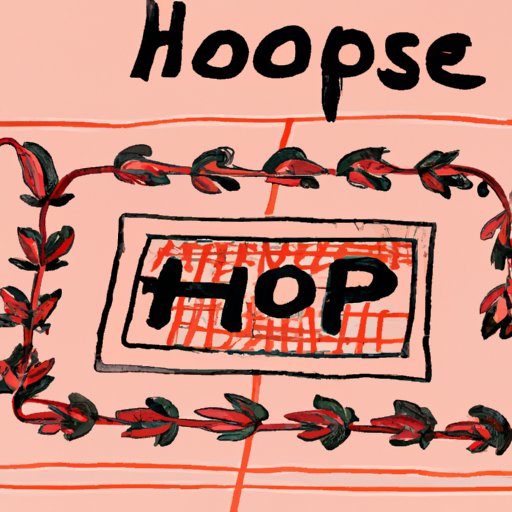
I. Introduction
Hopscotch is a beloved game for people of all ages, from young children to adults. Played with a small stone or marker, all that is needed is a chalk-drawn diagram on a sidewalk or pavement. This game has an enduring appeal for its simplicity, creativity, and fun. This article aims to provide readers with a comprehensive guide to playing hopscotch as well as its history and cultural significance.
II. A step-by-step guide to playing hopscotch
The basic rules of hopscotch are simple: one player tosses a small marker or stone into a numbered square and then hops on one foot to retrieve it while skipping the square where the marker is. The player must continue to hop and jump through the sequence until they reach the end and retrieve their marker.
To play hopscotch on a traditional court, start by finding a suitable place and creating a 10-square board with chalk or tape. Number the squares one through ten, with a triangular space at one end marked as the “safe zone.”
When playing, players begin by tossing their markers on square one and must hop on one foot only into each subsequent square, using the opposite foot to skip any square with a marker in it. When they reach the end, they must turn around and return to the start, this time picking up the marker on square two. This continues for each square in sequence, with the game ending when a player completes the course without failing.
III. The history and evolution of hopscotch
While the roots of hopscotch are elusive, it is known to have originated in ancient Rome, where battle strategies and outdoor physical games for children were popular. Hopscotch evolved over time and became an internationally beloved game. For example, Japanese and Indian versions of hopscotch have similar patterns and rules. In England, the game became a popular pastime among children in the 17th century and picked up several regional variations, such as staircases and snail designs.
Interestingly, hopscotch games have also appeared in Christian religious practices as well as in Renaissance art and literature. For example, hopscotch appears in the works of William Shakespeare and Francis Quarles, and images of children playing hopscotch have adorned artwork from the Baroque and Rococo periods to modern posters.
IV. The health benefits of playing hopscotch
Although hopscotch may seem like a simple and straightforward game, it can provide numerous benefits to health and wellbeing. For example, hopscotch can increase physical movement, coordination, balance, and agility. Additionally, it helps in developing cognitive skills such as planning, reasoning, and decision-making. Health studies have shown that activities like hopscotch improve lung and heart health, promote a better mood, and reduce stress levels.
V. How to build a hopscotch court
Constructing a hopscotch court is not complicated, and the design can be adapted to various surfaces and locations, including sidewalks, playgrounds, or indoor gyms. To build a hopscotch court, start by cleaning the surface of the area you want to use. Ensure the surface is dry and smooth. Then, use chalk or masking tape to mark ten squares in a rectangle, with a triangle at one end for the “safe” zone, such as shown in the illustration below. Make sure the dimensions of the rectangle are roughly three feet wide by eight feet long.
Materials that can be used to draw a hopscotch court include chalk, masking tape, or paint. Chalk works best for outdoor surfaces, while tape or paint is suitable for indoor and smooth surfaces.
VI. Hopscotch variations around the world
In different countries, hopscotch has been adapted to reflect local customs and preferences. In India, there is a version of hopscotch called Kith-Kith or Ekhat-Dukhat. Japan has its own version called “Never Too Old Tournament,” where adults compete in speed and accuracy hopping over a “board” layout. In the United Kingdom, there are many regional variations such as “Scotch hops,” “Peever and Chucks,” and “Beds and Molls.”

VII. The cultural significance of hopscotch
Along with its enduring popularity, hopscotch is also significant culturally and socially. In many cultural settings, hopscotch is used as a tool to teach the young core cultural values such as determination, endurance, and perseverance. It is also notable that hopscotch has been artistically interpreted in dance routines, music videos, and performance art pieces highlighting its presence as a cultural symbol across all art forms. Also, hopscotch has even influenced the movie industry, with big names like Heath Ledger’s co-star Julia Stiles and Queen Latifah using the game as a platform to connect with younger viewers.
VIII. Creative ways to make hopscotch more fun
While hopscotch is a fun and engaging game on its own, there are many ways to modify it and make it more exciting. For example, draw extra shapes, lines, and targets on the board. Try hopping through the shapes or adding obstacles, including thrown objects, balance challenges, or various movements like jumping jacks between square sequences. Meanwhile, playing hopscotch with friends or family is an enjoyable way to make memories and connect with others.
IX. Conclusion
In summary, hopscotch is a fun game that has transcended both time and cultural boundaries. Hopscotch offers simple but effective benefits, including physical activity, cognitive development, social connections, and creativity. As it is easy to build and play, we should enjoy, teach, and pass on the game’s rich cultural heritage to generations to come.
This article covers all the basic aspects of hopscotch, including how to play, its history and evolution, the health benefits, variations around the world, how to construct a hopscotch court, its cultural significance and creative adaptations. Please share this article with your friends and family members, so that they can rediscover the joy and playfulness that hopscotch evokes.





